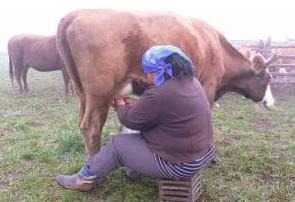By Nick Farnhill
Raw milk advocates’ efforts to expand availability across the U.S. have not slowed despite health officials’ assertions that it’s dangerous to drink milk that hasn’t been heated to kill bacteria.

Efforts to legalize raw milk sales in some form have succeeded in 42 states, and expansion pushes are ongoing this year in states including Illinois, Massachusetts, Montana, New Jersey, Rhode Island, North Dakota and Texas.
“We are concerned that increases in legislation of raw milk can certainly lead to increases in outbreaks of illness in those states,” said Dr. Megin Nichols with the Centers for Disease Control and Prevention.
The CDC warns against drinking raw milk, especially by children under age 5, older adults, pregnant women and people with weakened immune systems. Illnesses are most commonly caused by bacteria including campylobacter, E coli and salmonella and the microscopic parasite cryptosporidium.
A CDC study released in 2015 found 81 percent of raw milk outbreaks from 2007 to 2012 occurred in states with legalized sales.
“I think what we’re seeing now is an increasing trend in the number of outbreaks of illness as we see increased sale, increased consumption,” Nichols said.
Advocates argue heating milk to kill bad bacteria also damages beneficial enzymes and milk proteins.
State raw milk laws vary widely, from outright bans in eight states to allowing retail sales in at least 10 others. Still others permit sales only on the farm that milks the animals. A few states recently have allowed herd-sharing arrangements that let people buy raw milk from individual animals. Some only allow it to be sold for pet consumption.
A proposal in Massachusetts would allow farmers with 12 or fewer cows or goats to sell raw milk through animal-sharing agreements and at farm stands.
“Raw milk is one area that can help farmers to sustain and grow their dairy business,” said Sen. Anne Gobi, the bill’s sponsor. “The opportunity to be able to create a larger market and better marketing ability will be a great assist to our farmers.”
A New Jersey bill sponsored by Assemblyman John DiMaio would establish a raw milk permit program.
People are buying it now whether it be in Pennsylvania, New York or even from farms in New Jersey, from friends,” he said. “The bill would at least codify it and put some inspections and checks in place and make it a legal product to sell in New Jersey.”
Supporters lined up in February to testify in support of a Montana bill sponsored by Rep. Nancy Balance that would allow farmers with fewer than five cows, 10 goats or 10 sheep to sell milk to the public.
“It’s time for the state government to get out of our kitchens and end this control of what we choose to eat and drink,” said Balance, whose bill has passed the House.
When the Food and Drug Administration began requiring milk pasteurization in 1987, the agency prohibited raw milk sales across state lines, but that hasn’t stopped the transactions.
Click here to see more...